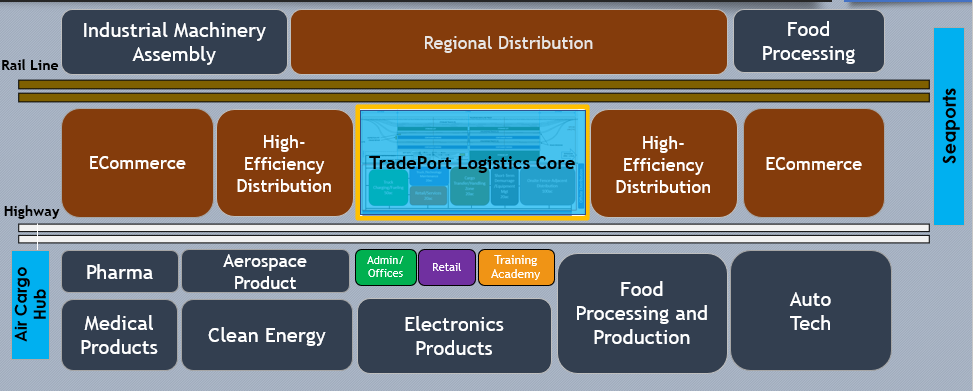The TradePort California logistics corridor runs through a combined region of over 31 million people, with about half of that in the Central Valley, Sacramento, and Bay Area. The TradePort system is designed to efficiently serve the entire Market Area’s considerable consumption and production markets. The TradePort California corridor overlays the Highway 99/transcontinental rail line alignment and is the primary commercial corridor connecting Northern California and Southern California. This corridor is an important national freight corridor and one of the busiest and most congested freight corridors in North America.
TradePort hubs are envisioned at four locations along the corridor, with up to seven Satellite TradePorts feeding cargo to the main corridor spine. TradePorts are being planned as up to 3,000-6,000 acre districts, with a 150-300 acre Logistics Core Zone located in the center. The substantial efficiencies associated with proximity to the Logistics Core Zone will create market demand for a range of private manufacturing and logistics investment and remaining land will be developed as a TradePort Investment Zones that will host a wide variety of manufacturing and distribution investments. Importantly, included in each TradePort plan are investments in retail services, accommodation, and a skills academy.

Within the Logistics Core Zone, depending on location there are plans for both rail and advanced motor carrier infrastructure. Each TradePort will have a Truck Mobility Complex, these being futuristic truck logistics, services, and clean energy hubs. These complexes are designed as combined next-generation clean energy transportation and logistics centers with electric charging and hydrogen fueling for the next generation truck fleets that are now being introduced.